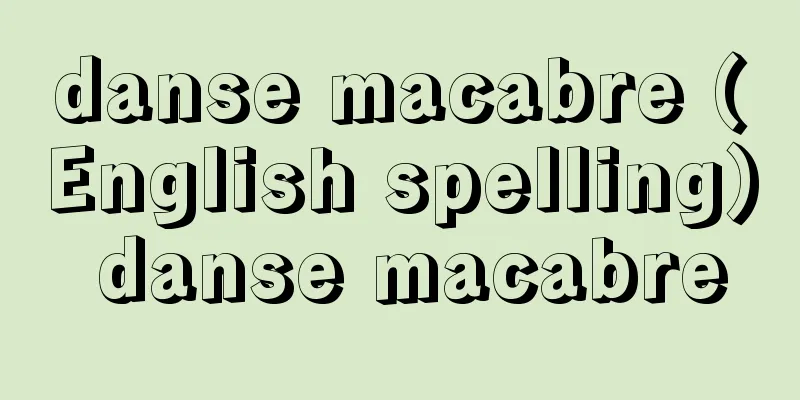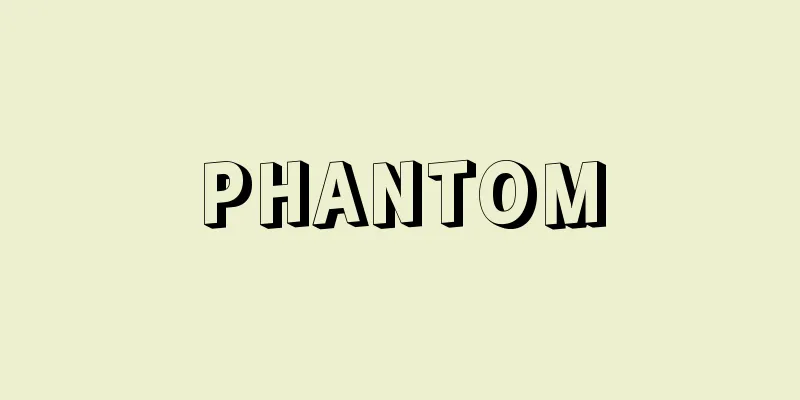Goma - Sesame

|
A ritual in which offerings are thrown into a fire to make offerings to various deities. It is a transliteration of the Sanskrit word homa (meaning to burn or burn). It is a ritual that has been practiced since ancient times in Brahmanism in India, and is still widely practiced today. It is based on the belief that when offerings are thrown into the furnace of the altar, they are turned into flames by the fire god Agni and rise to the heavens, reaching the mouths of the heavenly gods, who respond by granting human desires. This ritual was adopted by esoteric Buddhism, and organized to achieve a higher level of spiritual liberation that lies beyond the worldly desire to ward off disasters and bring good fortune, and is now known as goma, which is performed in esoteric temples. In other words, it is a ritual in which a goma altar with a fire furnace is placed in front of the principal image, such as Acala or Aizen Myo-o, and the prescribed amount of goma wood is burned, and offerings such as grains are thrown into the fire to make offerings to the principal image. The Mahavairocana Sutra's "Seiseise Goma Hoho" chapter criticizes the 44 fire-based practices of heretics that are aimed only at worldly desires, and clarifies the true nature of fire. As the spiritual aspect became more important, two types of goma were taught. Specifically, external goma (jigoma) is the form of offering offerings to a fire on a platform, and internal goma (naigoma) is the transformation of one's own ignorant and worldly desires into the fire of Tathagata's wisdom, burning away delusional discrimination, and attaining a pure bodhi mind. External goma is always accompanied by internal goma, and internal goma is always accompanied by external goma. Goma can also be classified according to purpose into four types: Sokusaiho, Soyakuho, Chobukuho, and Respectho, with the addition of Kouchoho making a total of five types. Of these, Sokusaiho is a method to eliminate natural disasters, disasters, illness, fire, and other disasters in a secular sense, but internally it is a method to remove one's own worldly desires. Soyakuho is to increase status and good fortune, but its original meaning is to increase the two virtues of happiness and wisdom of the bodhi mind. Chobukuho is to make external enemies surrender, and internally it is to eliminate one's own worldly desires. Respectho is a method to gain the respect and love of people, but internally it is to receive the mercy of the Buddha and achieve enlightenment. The Kasho method is a method to invite the ideal world (the world of enlightenment) that one desires, but internally it is a method to invite people who have fallen into the three evil realms (the worlds of hell, hungry ghosts, and animals) into the world of enlightenment. As such, the methods differ depending on the purpose, but the shape of the furnace, the direction, the time of performance, and the colors used also differ depending on the ritual. Furthermore, the purpose of the ritual is written on a board or piece of paper called a goma fuda, which is used as a talisman. The most systematic explanation of the goma method is the "Vajrayana Yoga Goma Ritual." The platform on which the goma ritual is performed is called the gomadan. A fire pit (goma furnace) is placed in the center, and a torii gate is erected in front of the monk to serve at the fire pit. On the platform, gargling vessels and purification vessels are lined up to the left of the furnace, with two scattered walking sticks placed on each. On the right side, vessels for grain and food and drink are lined up, with large and small ladles placed on a shakuyasume in front of them. Vessels for scattered incense, round incense, medicinal herbs, and other items are placed on the table on the left, and flowers, a drumstick, sandalwood, milkwood, chopsticks, and fans are lined up on the table on the right. [Ikusumi Onozuka] Source: Shogakukan Encyclopedia Nipponica About Encyclopedia Nipponica Information | Legend |
|
供物(くもつ)を火中に投じ、諸尊に供養する修法(しゅほう)。サンスクリット語のホーマhoma(焼く、焚(た)くの意)の音写。インドでバラモン教において古くから行われた祭祀(さいし)法であり、今日でも広く行われている。それは、供物を祭壇の炉中に投げると、火天アグニの手により火炎となって天に昇り、天の諸神の口に達し、諸神はそれにこたえて人間の願望をかなえてくれるとの信仰に基づく。この儀式を密教が摂取し、災いを除き福を招くという世間的願望に加えて、その奥にあるより高度な精神の解脱(げだつ)を成就しうるように組織したものが、現在、密教寺院で修されている護摩である。すなわち、不動明王や愛染(あいぜん)明王などの本尊の前に、火炉のある護摩壇を置き、規定の護摩木を焚き、火中に穀物などの供物を投じて本尊を供養する修法をいう。『大日経』「世出世護摩法品」には、世間の願望のみを目的とする外道(げどう)の44種の火法を批判し、火の真性を明らかにしている。このように精神面が重視されるに及んで護摩に2種の法が説かれるに至った。すなわち、壇を構え炉に供物を捧(ささ)げる形式を外護摩(げごま)(事護摩(じごま))、自身の無明煩悩(むみょうぼんのう)を転じて如来(にょらい)の智火(ちか)とし、妄分別(みだりにとらわれること)を焼除して浄菩提心(じょうぼだいしん)を成(じょう)ずるのが内護摩(ないごま)(理護摩)であると説き、外護摩にはかならず内護摩が具(そな)わり、内護摩にはかならず外護摩が伴うものとする。 また護摩法にはその目的から分類して、息災法、増益(そうやく)法、調伏(ちょうぶく)法、敬愛法の4種およびこれに鉤召(こうちょう)法を加えた5種がある。このうち息災法は、世俗的には天変・地異や病難・火難などを消滅する法であるが、内面的には自身の煩悩を除き去る法である。増益法とは、地位・福徳などを増進させることであるが、本義は菩提(ぼだい)心の福と智の二徳が増進することである。調伏法は、外敵を降伏させることで、内面的には自身の心の煩悩を断つことである。敬愛法は、人々の尊敬・親愛を得る法であるが、内面的には仏の慈悲を受け成仏(じょうぶつ)を実現することである。また鉤召法は、自身の求める理想の世界(悟りの世界)を招く法であるが、内面的には三悪趣(さんなくしゅ)(地獄、餓鬼(がき)、畜生(ちくしょう)の世界)に堕している人々を悟りの世界に招き入れる法である。このように目的によって法が異なるが、修法によって炉形、方向、行う時、用いられる色なども異にする。なお、修法の祈願の趣旨を板や紙に書いたものを護摩札(ごまふだ)といい、護符にされる。護摩法をもっとも体系的に示すものに『金剛頂瑜伽(ゆが)護摩儀軌(ぎき)』がある。 護摩法を修する壇を護摩壇という。中央に火炉(護摩炉)を置き、火炉の給仕のため行者の前に鳥居を立てる。壇上には炉の左側に嗽口(そこう)器と洒浄(しょうじょう)器を並べ、上にそれぞれ散杖(さんじょう)2本を置く。右側に五穀器と飲食(おんじき)器を並べ、その手前の杓休(しゃくやすめ)に大小の杓を置く。左脇机(わきづくえ)に散香(さんこう)、丸香(がんこう)、薬種その他の器を置き、右脇机には盛花、打鳴らし、檀木(だんもく)、乳木(にゅうもく)、箸(はし)、扇などを並べて置く。 [小野塚幾澄] 出典 小学館 日本大百科全書(ニッポニカ)日本大百科全書(ニッポニカ)について 情報 | 凡例 |
<<: Sesame oil (sesame oil) - Gomabura (English spelling) sesame oil
>>: Sesame (sesame) - Sesamum indicum; sesame
Recommend
Nazareth
The central city of the northern part of Israel. I...
Shonan
Also called the Shonan region. This coastal area ...
tread
...A tire with cords arranged perpendicular to th...
Food chain - food chain
All organisms in a biological community are conne...
Foreign Currency Bonds - Gaikasai
Bonds offered outside the country of the bond issu...
Shobogenzo Zuimonki - Shobogenzo Zuimonki
A Buddhist book from the Kamakura period. Six vol...
Lachenalia aloides (English spelling)
…[Tora Saburo Kawabata]. … *Some of the terminolo...
Turkmen - Turkmen (English spelling)
It is one of the Turkic languages. It is spoken b...
Soul - Reikon (English spelling) soul English
The principle assumed to give life to humans and ...
Louis Feuillade
1873‐1925 French film director. As head of product...
Oinone (English spelling)
…At his birth, he was abandoned in Mount Ida beca...
General Natural History of the Indies
In 1526, he published "Outlines of the Natur...
Coastline - Kaigansen (English spelling) coastline
The boundary between the sea and land. The positio...
《Sweeping Away》 - Even More
…This culture fostered the creation of the 13 Hok...
Rice harvesting sickle - Inekarigama
…Broadly speaking, sickles are divided into two t...


![Tuz [Lake] - Tuz](/upload/images/67cc5085652fa.webp)




![Arlberg [pass] - Arlberg](/upload/images/67cadf5322a82.webp)

